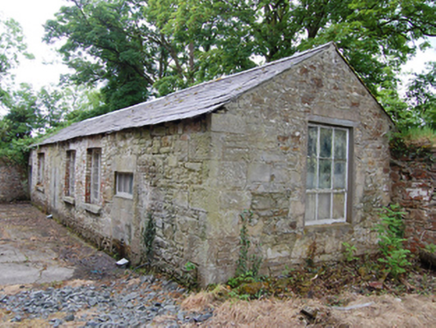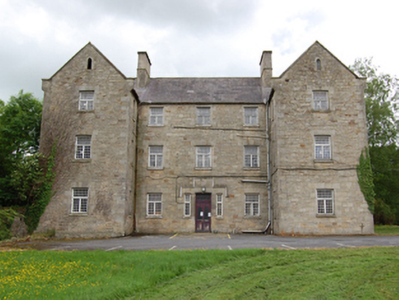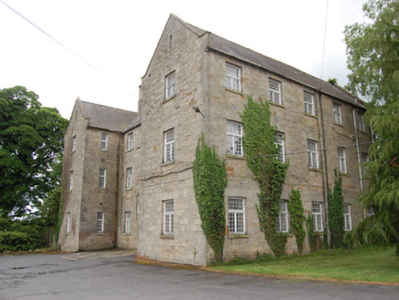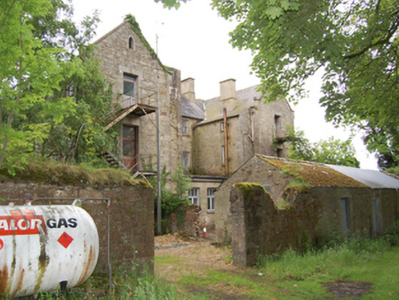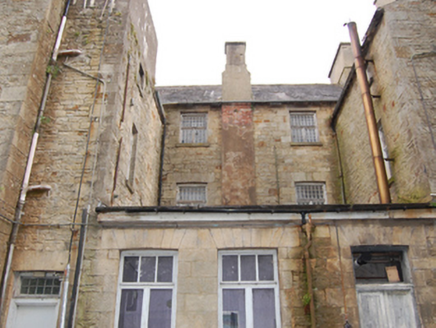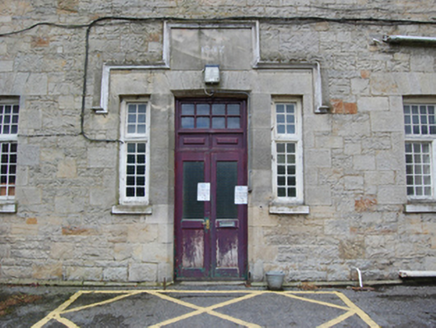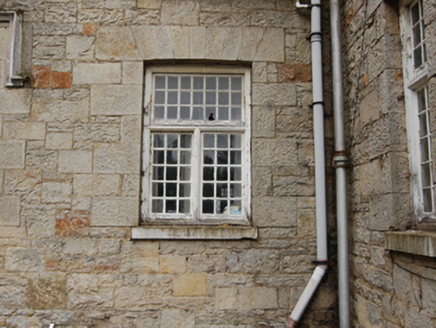Survey Data
Reg No
40000455
Rating
Regional
Categories of Special Interest
Architectural, Historical, Social
Previous Name
Cavan Union Workhouse Fever Hospital
Original Use
Workhouse
Historical Use
Hospital/infirmary
Date
1845 - 1850
Coordinates
242156, 306263
Date Recorded
03/08/2012
Date Updated
--/--/--
Description
Detached H-plan five-bay three-storey former workhouse hospital, built 1847, with advanced gable-fronted end bays and single-storey section between end bays to rear, now disused. Steeply pitched slate roofs behind raised gable copings to front and rear with flat corbelled kneelers at eaves, rendered chimneystacks flanking centre bays, sections of cast-iron rainwater goods. Squared rubble sandstone walls with dressed quoinstones and window sorrounds. Pointed-arched openings with timber louvres to apex of gables at front and rear. Square-headed window openings having flush block-and start dressings and cut-stone sills with multiple-pane timber windows composed of pivoted overlight over transom and side-hung casements closing to central mullion. Square-headed door opening with replacement double-leaf doors and historic multi-pane overlight flanked by square-headed multiple-pane side lights, all under stepped label moulding enclosing large datestone over door inscribed '1847'. Single-storey buildings to rear, possibly former isolation ward, having slate roof, random ashlar walls and multiple pane timber windows.
Appraisal
An imposing and austere building with little decorative detail but executed in good quality masonry of local sandstone. The Fever Hospital was constructed in the site of the Cavan Union Workhouse in 1847 at the height of the Great Famine of 1845-1849 in response to the countrywide outbreak of fever in 1846-7. It has survived without visible alterations and is strongly evocative of the tragic period in which it was built. Along with the workhouse and ancillary buildings, it forms an important part of the architectural heritage of Cavan and its association with the Great Famine contributes to its historical and social heritage significance.
